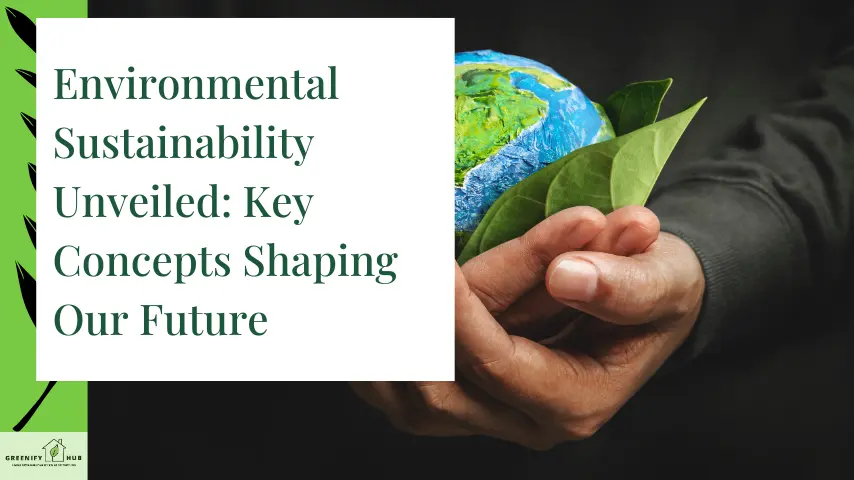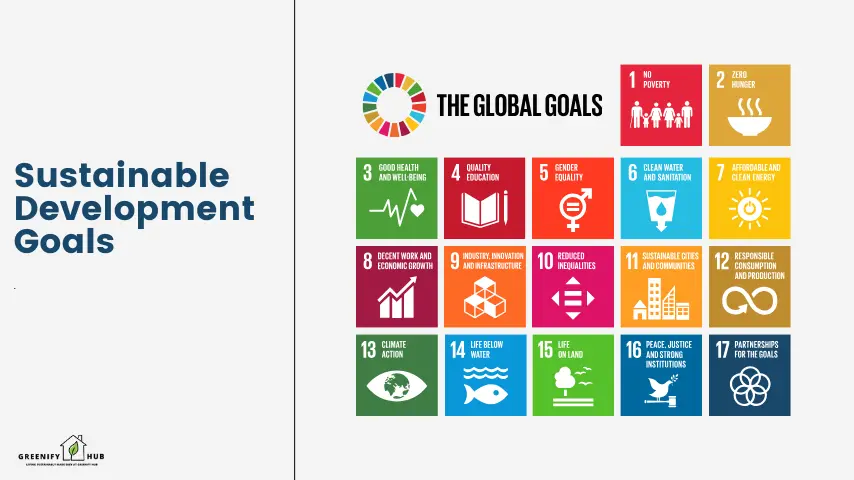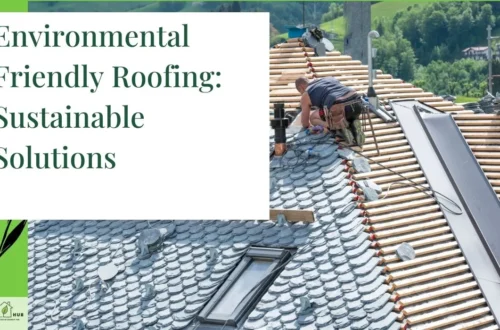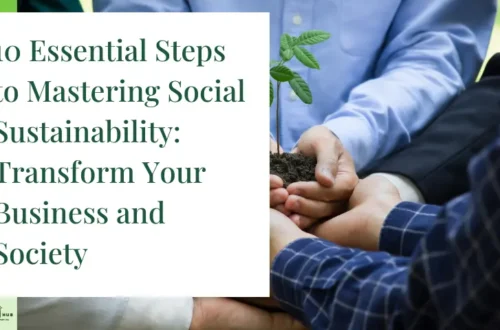Environmental Sustainability Unveiled: Key Concepts Shaping Our Future

At its core, environmental sustainability is about living in harmony with our planet. It’s the idea that we can meet our needs today without compromising the ability of future generations to meet theirs.
Imagine you’re playing a video game with unlimited lives. Sounds great, right? But what if those lives were shared with all future players? Suddenly, you’d think twice before using them recklessly.
That’s environmental sustainability in a nutshell.
It’s about finding that sweet spot between using our resources and preserving them for the future. Think of it as being a good roommate to Planet Earth.
Key Components of Environmental Sustainability
1. Resource Conservation
2. Pollution Reduction
3. Ecosystem Protection
Resource Conservation
This is like budgeting your allowance to last the whole month. We need to use our natural resources wisely, so they don’t run out.
Pollution Reduction
Imagine keeping your room clean so it doesn’t get too messy to live in. That’s what we’re doing with our planet when we reduce pollution.
Ecosystem Protection
Think of ecosystems as nature’s neighborhoods. We need to protect these areas so all the plants and animals can continue to thrive.
Environmental sustainability isn’t just about hugging trees (though that’s nice too). It’s about creating a balance between our needs and the planet’s ability to provide.
It’s a big concept, but it starts with small actions. Using a reusable water bottle, turning off lights when you leave a room, or choosing to walk instead of drive for short trips – these all contribute to sustainable development.
Remember, we’re all in this together. The choices we make today shape the world of tomorrow.
Environmental sustainability is about meeting our current needs without compromising the ability of future generations to meet theirs, requiring a balance between resource use, pollution reduction, and ecosystem protection.
The Three Pillars of Sustainability
When we talk about sustainability, it’s like a three-legged stool. Each leg is crucial for balance, and if one falls short, the whole thing topples over.
These three legs, or pillars, are:
1. Economic Development
This is about making sure everyone has access to jobs and resources. It’s like ensuring everyone in a game has a fair chance to earn coins.
2. Environmental Impact
This focuses on protecting our planet. Think of it as keeping the game’s landscape healthy and beautiful for all players.
3. Social Inclusion
This is about fairness and equal opportunities for all. It’s like making sure every player in the game has a voice and is treated with respect.
These pillars work together to create a sustainable world. For example, a company might create jobs (economic development) while using renewable energy (environmental impact) and ensuring fair wages for all employees (social inclusion).
Imagine a town deciding to build a new factory. They’d need to consider:
– Will it provide jobs for locals? (Economic)
– How will it affect air and water quality? (Environmental)
– Will it benefit all parts of the community equally? (Social)
By balancing these three aspects, we can create solutions that are good for people, planet, and profit.
Remember, sustainability isn’t just about saving trees. It’s about creating a world where everyone can thrive, now and in the future.
The three pillars of sustainability – economic development, environmental impact, and social inclusion – must be balanced to create truly sustainable solutions that benefit both people and the planet.
RELATED: Mastering the 4 Pillars of Sustainability: Your Comprehensive Guide to a Sustainable Future
Global Regulations and Frameworks
Ever wondered how the world is trying to tackle sustainability on a global scale? It’s like a massive multiplayer game, where countries are the players and sustainability is the ultimate goal.
The United Nations has been at the forefront of this global effort. In 2015, they introduced the Sustainable Development Goals (SDGs) – think of these as the main quests in our global sustainability game.
The 17 Sustainable Development Goals
1. No Poverty
2. Zero Hunger
3. Good Health and Well-being
4. Quality Education
5. Gender Equality
6. Clean Water and Sanitation
7. Affordable and Clean Energy
8. Decent Work and Economic Growth
9. Industry, Innovation and Infrastructure
10. Reduced Inequalities
11. Sustainable Cities and Communities
12. Responsible Consumption and Production
13. Climate Action
14. Life Below Water
15. Life on Land
16. Peace, Justice and Strong Institutions
17. Partnerships for the Goals
These goals are like a roadmap for the global community, guiding us towards a more sustainable future by 2030.
But the SDGs aren’t the only framework out there. There’s also the Paris Agreement, focused specifically on climate change. It’s like a special mission in our game, where countries pledge to reduce their carbon emissions.
Then there’s the Convention on Biological Diversity, which is all about protecting the variety of life on Earth. Think of it as preserving all the different characters in our game’s ecosystem.
These global regulations and frameworks provide a common language and set of objectives for countries around the world. They’re like the rulebook for our sustainability game.
However, it’s important to note that these are often voluntary commitments. It’s up to individual countries to implement them through their own laws and policies.
For example, the European Union has its European Green Deal, a programme of action to make the EU climate-neutral by 2050. Meanwhile, China has its own Five-Year Plans that incorporate sustainability goals.
The key is that these global frameworks provide a shared vision and direction for the entire world.
Global regulations and frameworks like the Sustainable Development Goals and Paris Agreement provide a shared vision and direction for countries worldwide to work towards environmental sustainability.

RELATED: Mastering the Three Es of Sustainability: A Comprehensive Guide for Businesses
Business Responsibility in Environmental Sustainability
Businesses aren’t just about making money anymore. They’re like players in a game who’ve realized that to win long-term, they need to care for the world they’re playing in.
This shift is creating new economic opportunities. Companies are finding that being green can actually be profitable. It’s like discovering a secret level in a game that gives you bonus points!
The Business Case for Sustainability
1. Cost Savings: Reducing waste and energy use saves money
2. Innovation: Sustainability challenges drive new product ideas
3. Brand Value: Consumers prefer eco-friendly companies
4. Risk Management: Sustainable practices protect against future regulations
5. Talent Attraction: Young workers want to work for responsible companies
Let’s look at some real-world examples:
Patagonia: The Outdoor Gear Hero
Patagonia, the outdoor clothing company, has sustainability at its core. They repair old clothes, use recycled materials, and even encourage customers to buy less. Surprisingly, this has made them more profitable!
Interface: The Carpet Revolutionaries
Interface, a carpet manufacturer, set a goal to have zero environmental impact by 2020. They’ve drastically reduced waste, water use, and emissions. The result? Lower costs and higher profits.
Unilever: The Consumer Goods Giant
Unilever has committed to making all its plastic packaging reusable, recyclable, or compostable by 2025. Their sustainable living brands are growing 69% faster than the rest of their business.
These companies are moving away from the traditional development model of “take, make, waste”. Instead, they’re adopting a circular approach, where resources are used, reused, and recycled.
But it’s not always easy. Businesses face challenges like:
– Higher upfront costs for sustainable technologies
– Changing established processes and habits
– Measuring and reporting on sustainability efforts
Despite these challenges, more and more businesses are realizing that sustainability is not just good for the planet – it’s good for business too.
They’re finding that environmentally friendly economic growth is possible. It’s like discovering you can level up in the game while also making the game world better for all players.
Remember, every business, big or small, can play a part. Even small changes, like reducing paper use or encouraging remote work, can make a difference.
Businesses are increasingly recognizing that environmental sustainability is not just a responsibility, but also an economic opportunity that can drive innovation, reduce costs, and enhance brand value.
RELATED: Unleashing Cultural Sustainability: 12 Key Strategies for Thriving Communities
Climate Change and Sustainability
Climate change is like a boss level in our sustainability game. It’s a challenge that affects every player and requires all of us to work together to overcome.
At its core, climate change is about global warming. Our planet is heating up, mainly due to human activities that release greenhouse gases into the atmosphere.
The Main Culprits of Climate Change
1. Burning fossil fuels (coal, oil, gas)
2. Deforestation
3. Industrial processes
4. Agriculture
These activities release carbon emissions and other greenhouse gases, which trap heat in our atmosphere like a blanket.
The effects? They’re like changing the rules of our game mid-play:
– Rising sea levels
– More frequent and severe weather events
– Changes in wildlife habitats
– Threats to food and water security
But here’s the thing: climate change and sustainability are two sides of the same coin. Many of the actions we take for sustainability also help fight climate change.
For example:
– Using renewable energy reduces carbon emissions
– Protecting forests helps absorb CO2 from the atmosphere
– Sustainable farming practices can reduce methane emissions
It’s like finding power-ups in our game that help us tackle multiple challenges at once!
Countries around the world are setting targets to reduce their greenhouse gas emissions. The Paris Agreement aims to limit global warming to well below 2°C above pre-industrial levels.
But it’s not just up to governments. Each of us can play a part:
– Choose energy-efficient appliances
– Use public transport or bike when possible
– Reduce, reuse, recycle
– Support companies with strong climate commitments
Remember, in the game of sustainability, tackling climate change is a key mission. It’s challenging, but the rewards – a stable climate and a sustainable future – are worth it.
Climate change, primarily driven by human-induced global warming, is a critical challenge in sustainability efforts, requiring coordinated action from governments, businesses, and individuals to reduce greenhouse gas emissions and mitigate its impacts.
RELATED: 4 Game-Changing Sustainable Business Practices for Lasting Impact
Energy Consumption and Sustainable Practices
Energy is like the fuel that powers our global game of sustainability. But just as a game character needs to manage their energy wisely, so do we in the real world.
Our current energy consumption patterns are often unsustainable. We’re burning through non-renewable resources faster than we can say “Game Over.”
But there’s hope! Sustainable solutions are emerging, offering a paradigm shift in how we produce and use energy.
Sustainable Energy Solutions
1. Renewable Energy: Solar, wind, hydro, and geothermal power
2. Energy Efficiency: Using less energy to perform the same tasks
3. Smart Grids: Intelligent distribution of electricity
4. Energy Storage: Batteries and other technologies to store renewable energy
Take Denmark, for example. On some days, they produce more wind energy than their entire country consumes!
Or consider LED lights. They use about 75% less energy than traditional incandescent bulbs. It’s like finding a cheat code that lets you do more with less energy!
Businesses are getting on board too. Google uses artificial intelligence to reduce the energy used in cooling its data centers by 40%.
Even our homes can become more energy-efficient. Smart thermostats, energy-efficient appliances, and better insulation can significantly reduce household energy use.
The key is to rethink our relationship with energy. Instead of just consuming, we need to start conserving and producing sustainably.
It’s a big change, but remember: every kilowatt-hour saved is a step towards a more sustainable future.
Transitioning to sustainable energy practices, including renewable sources and improved efficiency, is crucial for reducing our environmental impact and ensuring long-term energy security.
RELATED: Economic Sustainability Unveiled: 10 Key Principles for a Thriving Future
Population Growth and Environmental Challenges
Imagine our planet as a bustling city in a video game. As more players join, resources become scarcer, and managing the city becomes trickier. That’s pretty much what’s happening in real life with population growth and its impact on our environment.
The world’s population has more than doubled in the last 50 years. More people means:
– Increased demand for food, water, and energy
– More waste and pollution
– Greater strain on natural habitats
It’s like cranking up the difficulty level in our sustainability game.
The Environmental Impact of Population Growth
1. Deforestation: More land cleared for housing and agriculture
2. Water Scarcity: Increased demand strains freshwater resources
3. Air Pollution: More vehicles and industries lead to poorer air quality
4. Biodiversity Loss: Human expansion threatens wildlife habitats
5. Climate Change: More people generally means more greenhouse gas emissions
But it’s not all doom and gloom! Human activity can also be a force for positive change.
For example, in India, the “Green Revolution” dramatically increased food production to meet the needs of a growing population. However, it also led to environmental issues like soil degradation and water pollution.
Now, India is working on a “Evergreen Revolution”, focusing on sustainable farming practices that increase yields while protecting the environment.
Urban areas, where population density is highest, are becoming laboratories for sustainable solutions:
– Vertical gardens in Singapore
– Bicycle highways in Copenhagen
– Zero-waste initiatives in San Francisco
These initiatives show that with innovative thinking, we can turn the challenges of population growth into opportunities for sustainable development.
The key is to find ways to meet human needs while minimizing environmental degradation. It’s about playing smarter, not just harder, in our global sustainability game.
While population growth intensifies environmental challenges, it also drives innovation in sustainable practices, highlighting the need for smart, efficient solutions to meet human needs while protecting the planet.
RELATED: 10 Essential Steps to Mastering Social Sustainability: Transform Your Business and Society
Smart Cities and Urban Transformation
Picture a city in a futuristic video game. It’s clean, efficient, and in harmony with nature. That’s the vision behind smart cities – urban areas that use technology and data to improve sustainability and quality of life.
As more people move to cities, urban transformation becomes crucial for sustainability. Smart cities are leading this change, turning urban challenges into opportunities for innovation.
Key Features of Smart Cities
1. Efficient Transportation: Smart traffic management and public transit systems
2. Green Buildings: Energy-efficient structures with smart heating and cooling
3. Waste Management: Automated collection and recycling systems
4. Clean Energy: Renewable power sources and smart grids
5. Water Conservation: Leak detection systems and smart metering
6. Digital Connectivity: High-speed internet and IoT (Internet of Things) devices
Let’s look at some real-world examples:
Singapore: The Garden City
Singapore is a pioneer in smart city development. They use:
– Sensors to monitor air quality, traffic, and water usage
– Vertical gardens to increase green space
– A smart water management system that reduces waste
Barcelona: The Digital City
Barcelona has embraced technology to become more sustainable:
– Smart streetlights that adjust based on pedestrian activity
– Sensors in garbage bins to optimize waste collection routes
– An extensive network of electric vehicle charging stations
Amsterdam: The Circular City
Amsterdam is focusing on becoming a circular economy:
– Encouraging the reuse and recycling of materials
– Promoting shared mobility solutions
– Developing smart energy systems for homes and businesses
These cities show that urban transformation is not just about technology. It’s about using that technology to create more livable, sustainable urban spaces.
Smart cities also face challenges:
– High initial costs for infrastructure
– Privacy concerns with data collection
– Ensuring equitable access to smart services
Despite these challenges, smart cities represent an exciting frontier in urban sustainability. They’re like upgrading our urban gameplay, making our cities more efficient, livable, and environmentally friendly.
Remember, a smart city isn’t built overnight. It’s a continuous process of innovation and improvement, always aiming to make urban life better for people and the planet.
Smart cities leverage technology and data to transform urban areas into more sustainable, efficient, and livable spaces, showcasing how innovation can address the environmental challenges of urbanization.
RELATED: Conservation and Sustainability: 10 Key Differences That Shape Our Planet’s Future
Green Planning of Public Spaces
Imagine your favorite park in a video game. Now, picture that level of green, vibrant spaces throughout an entire city. That’s the goal of green planning in public spaces.
Green planning is about creating sustainable urban spaces that benefit both people and the environment. It’s like designing a game level where nature and city life coexist harmoniously.
Elements of Green Public Spaces
1. Urban Parks and Gardens
2. Green Corridors
3. Sustainable Water Features
4. Native Plant Landscaping
5. Green Walls and Roofs
These elements do more than just look pretty. They provide important benefits:
– Improve air quality
– Reduce urban heat island effect
– Support biodiversity
– Promote physical and mental health
– Enhance community interaction
Let’s look at some inspiring examples:
New York’s High Line
An abandoned elevated railway transformed into a lush, linear park. It’s now a green oasis in the concrete jungle, attracting millions of visitors each year.
Melbourne’s Urban Forest Strategy
The city is planting 3,000 trees annually to double its canopy cover by 2040. This will help cool the city and improve air quality.
Paris’s “15-Minute City” Plan
This initiative aims to make all necessary amenities accessible within a 15-minute walk or bike ride, reducing car use and promoting green transportation.
Green planning isn’t just about adding trees. It’s about rethinking how we design our cities to be more sustainable and livable.
It’s a shift from seeing nature as separate from urban life to integrating it into the fabric of our cities.
Green planning of public spaces integrates nature into urban environments, creating sustainable, healthy, and vibrant cities that benefit both residents and the ecosystem.
Conclusion
As we navigate the complex landscape of environmental sustainability, it’s clear that our actions today will shape the world of tomorrow. The key concepts we’ve explored offer a roadmap for creating a more sustainable future, balancing economic growth with environmental stewardship and social responsibility. From smart cities to circular economies, from biodiversity conservation to technological innovations, each aspect plays a crucial role in our collective journey towards sustainability.
By embracing these concepts and integrating them into our daily lives, businesses, and governance structures, we can drive meaningful change. The challenges we face are significant, but so are the opportunities for innovation and progress. As global citizens, it’s our responsibility to make informed decisions, support sustainable practices, and contribute to the well-being of our planet and future generations.
Let’s commit to being active participants in this sustainability revolution. Whether it’s through personal choices, professional endeavors, or community initiatives, every action counts. Together, we can create a more resilient, equitable, and environmentally conscious world. The future of our planet depends on the choices we make today – let’s make them count.





